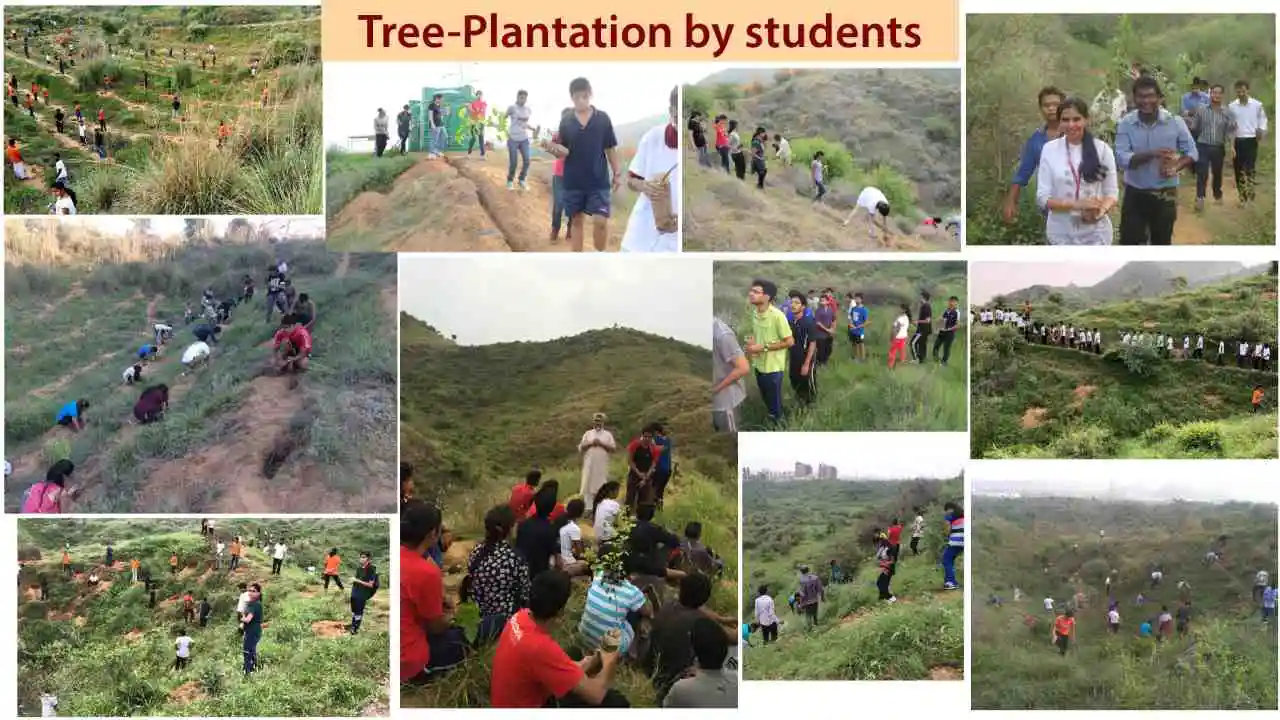Environmental Sustainability
Institutional Best Practices
Creation and maintenance of a self-sustaining and modern campus that is in harmony with nature and provides a highly conducive environment for the development of socially responsible leaders, through seamless and sustainable academic learning.
Objectives of the Practice
- Be a role model of environmental sustainability.
- Utilize available resources to create a comfortable and healthy educational campus.
- Develop a prototype for addressing environmental issues of the region.
- Apply the concept of environmental and economic sustainability as the major determinants for campus design.
Intended Outcomes of the Practice
- Resurrection of local environment for improvement of ecology and biodiversity.
- Utilization of natural and renewable resources to minimize carbon footprint.
- Reuse and recycling of waste to minimize its effect on environment.
- Conservation of energy and water in consonance with sustainable development goals.
- Prevention of ecological erosion and revitalization of arid land and water bodies.
- Contain ecological degradation of surrounding areas with the local community in Neemrana.
The Context:
At Neemrana one had to contend with extreme desert climate, eroded landscape, no municipal infrastructure, and a battered and barren hillside. The site is deeply eroded by the runoff from the Aravalli and the barren land has sparse cover. Daytime summer temperatures reach 43°C with hot dusty winds. Such a challenging situation provided unique opportunities to innovate. It is intended to address the following issues through this practice
- Create a pollution-free and “forest-like” microclimate with a minimum carbon footprint.
- Ensure sustainable living and learning by adopting traditional Rajasthani conservation measures to mitigate adverse climatic effects.
- Proactive engagement with the local community for harmonious co-existence, protection of native species and enhancement of biodiversity.
- Conservation of energy by maximizing the use of elements of nature and renewable energy.
- Water conservation by ensuring reduction, reuse, and recycling and restoration of water bodies.
The Practice:
The initiatives:
- Green Cover:
Resurrecting 800 acres of adjoining Aravalli range by planting almost one lakh trees since 2009. All students, employees, and visitors plant trees, which is further augmented by plantation with the local community during ‘Van Mahotsav’ every year.
Project Krishna Leela:
A ‘Rewilding’ project on Aravalli range executed under the guidance of Mr Pradip Krishen, a prominent environmentalist from March 2022. It involves planting native plants and shrubs with watering only for one year, which further adds to water conservation and increases biodiversity. (Link: Project Krishna Leela: Rewilding of Aravalli Hills)
Green Air conditioning:
- Sustainable cooling in all buildings through India’s largest Geothermal Cooling system using Earth Air Tunnels.
- Benefit is derived from earth’s constant temperature at 4 meters below the surface. (Link: EAT Video 1)
- Daylight harvesting with skylight and light shelves/shafts, to conserve energy.
- Solar energy for lighting and heating and smart timers in street-lighting, corridors, and toilets. (Link: Sustainability at NU Video)
Water Conservation:
- Five Water harvesting recharge wells were created on Campus to capture run-off water to recharge sub-soil water. (Link: Water Harvesting)
- 15 check-dams built through local administration support on Aravalli slopes to harvest rainwater, resulting in increased ground green cover and prevention of soil erosion and further desertification of the Aravalli hills. (Link: Check Dams 1)
- Smart and sensor taps in toilets and wash basins.
- Recycling of RO wastewater to the flushing line.
- Wastewater recycling (97% from STP) and its utilization through drip irrigation for watering plans. (Link: Water Management)
- Revival of the Sabi River, which had completely dried over last 30 years, in collaboration with Dr Rajendra Singh, the Waterman of India. (Link: Sabi River Revival-1)
Building Layout and Lighting: The Campus is designed like a traditional desert city.
- Tight knitting of built and open spaces and North-South orientation of buildings to create shaded spaces, to prevent heat gains from the West and to facilitate wind flow.
- Internal and external light shelves to improve distribution of daylight inside buildings.
- Artificial light is used only when daylight is not available.
Evidence of Success:
The efforts made by NU have resulted in the following:
- Eight awards to NU in recognition of its environmental sustainability efforts.
(Link: Environmental Sustainability Efforts) - Creation of a vibrant learning campus in complete harmony with nature.
(Link: NU Campus Short Video). - Creation of a microclimate due to 600 meters deep green cover on Aravalli range, resulting in cooler campus, reduction in pollution and improvement of AQI in relation to surrounding areas.
(Link: AQI Comparison).
(Link: Before and After Effect). - Water conservation measures resulting in lesser depletion of water table as compared to Neemrana town and improved green cover and biodiversity. (Link: Water Table Comparison).
- Conservation of 60% energy through ‘Green Airconditioning” for cooling as compared to conventional air conditioners. (Link: Cumulative HVAC Energy Saving).
- Partial revival of flow in Sabi River; with further work in progress for revival of flow in its entire length. (Link: Sabi River Masani Barrage Flow).
- Noticeable success in rewilding of Aravalli hills through ‘Project Krishna Leela’, 90% survivability of plants and perceptible increase in biodiversity. (Link: plants and biodiversity).
Problems Encountered:
- Countering harsh weather conditions and extreme high temperature.
- Highly eroded, fractured, and arid land.
- Exploitation of scanty green cover by the local community.
- Overexploited underground water and no external water supply.
- Scanty rainfall.
- No connection to municipal or urban sewage system.
- Lack of local resources and urban infrastructure.
- Absence of waste management system.
- Complete decay of water flow in Sabi River.
Resources Required:
- Preparing a ‘Master Plan’ to suit prevailing geographic conditions.
- Obtaining professional opinion from Green Architect (Mr Vinod Gupta) and Landscape Architect (Mr Mohammad Shaheer).
- Building a sustainable campus for efficient use of water and energy.
- Active involvement of Govt officials for construction of check dams.
- Getting electric supply line and road link up to the Campus.
- Consultation with experts for revival of Sabi River.
Notes:
Sustainability was foremost in the minds of the Founders’ while establishing NIIT University (NU). Minute details, right from the flora and fauna, topography and, natural habitat was considered while building the campus. Building a Campus right at the edge of Thar Desert was a huge challenge, but Neemrana provided an opportunity to explore the possibilities of building sustainably in the difficult terrain of Rajasthan which contributed to sustainable living and learning:
- Sustainable Campus: NIIT University follows all regional environmental norms. The campus boasts of buildings with effective green architectural design parameters. Building structures and landscapes retain the surface contours of the terrain. This has contributed positively to the retention of local geology.
- Green Initiative: NU’s pioneering green initiative is the geothermal cooling system. A labyrinth of Earth Air Tunnels (EATs) cools the classrooms, laboratories, and residential buildings. Other initiatives are protecting native tree species and partnering with the local community to spread awareness. NU students are intimately involved in sustainability initiatives of the University; they pay obeisance to nature which binds them with the local community.
- Sabi River rejuvenation: NU is fully committed to protecting and conserving its natural environment and preventing soil and water pollution. University has undertaken the task of resurrection of the environment 20 kms around the University Campus at Neemrana (Rajasthan) including the task of rejuvenation (Punarjiwan) of the river.



